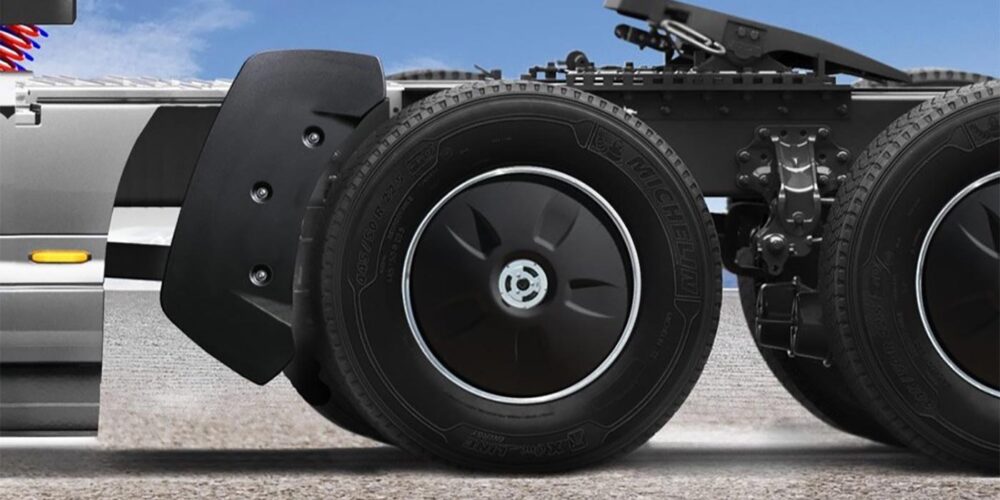FlowBelow introduces AeroFender device for drag reduction, fuel efficiency improvement
Independent testing found that FlowBelow’s new AeroFender saved 1.49 gallons of fuel for every 1,000 miles driven.
FlowBelow Aero, Inc., has introduced its new AeroFender, a device that is equipped to truck wheels and reduces drag on day- and sleeper-cabs. FlowBelow tells us that the AeroFender improves fuel efficiency by re-directing the airflow ahead of and around a power unit’s leading drive axle.
At a controlled track test completed in November 2023 by Mesilla Valley Transportation Solutions, FlowBelow says its technology was proven to save 1.49 gallons of fuel for every 1,000 miles driven, or 1.44% overall. The company says that fleets can expect a truck equipped with an AeroFender and traveling 125,000 miles per year to save an estimated 187 gallons of fuel and approximately 4,207.5 lbs. of CO2.
Link redesigns LB20 ramps
Link’s LB20 ramps are 25 pounds lighter, feature spring-assist lift mechanisms, stow at an 8-inch vertical depth and are easier to install.

PACCAR Parts names Weller as 2023 Supplier of the Year
Throughout 2023, Weller contributed to PACCAR Parts overall network performance by exceeding 17% y/y growth.

Clore Automotive appoints new vice president of sales
The company says his invaluable experience and customer-centric approach make Dan Lucas right for the role.

Continental Tire opens Retread Solutions Center in South Carolina
The company hopes to uncover new improvements and technologies to innovate the retread process.

Other Posts
Akebono launches severe-duty brake pads for Ford models
The company says its new brake pads last longer and can lower maintenance costs, while still providing the stopping power fleets need.

Dayton Parts introduces fuel injector wiring harnesses, EGR coolers, trailer air tank reservoirs
Fuel injector wiring harnesses, exhaust gas recirculation coolers and trailer air tank reservoirs designed to match OEM spec.

Thermo King launches Electrification Readiness Program
The dealer program is designed to enable customers’ transition to more sustainable fleet solutions, improved efficiency and decarbonization.

Weather Guard adds new truck boxes and headache racks
The 2024 Saddle and Lo-Side truck boxes include the one-key Ultralock security feature.






